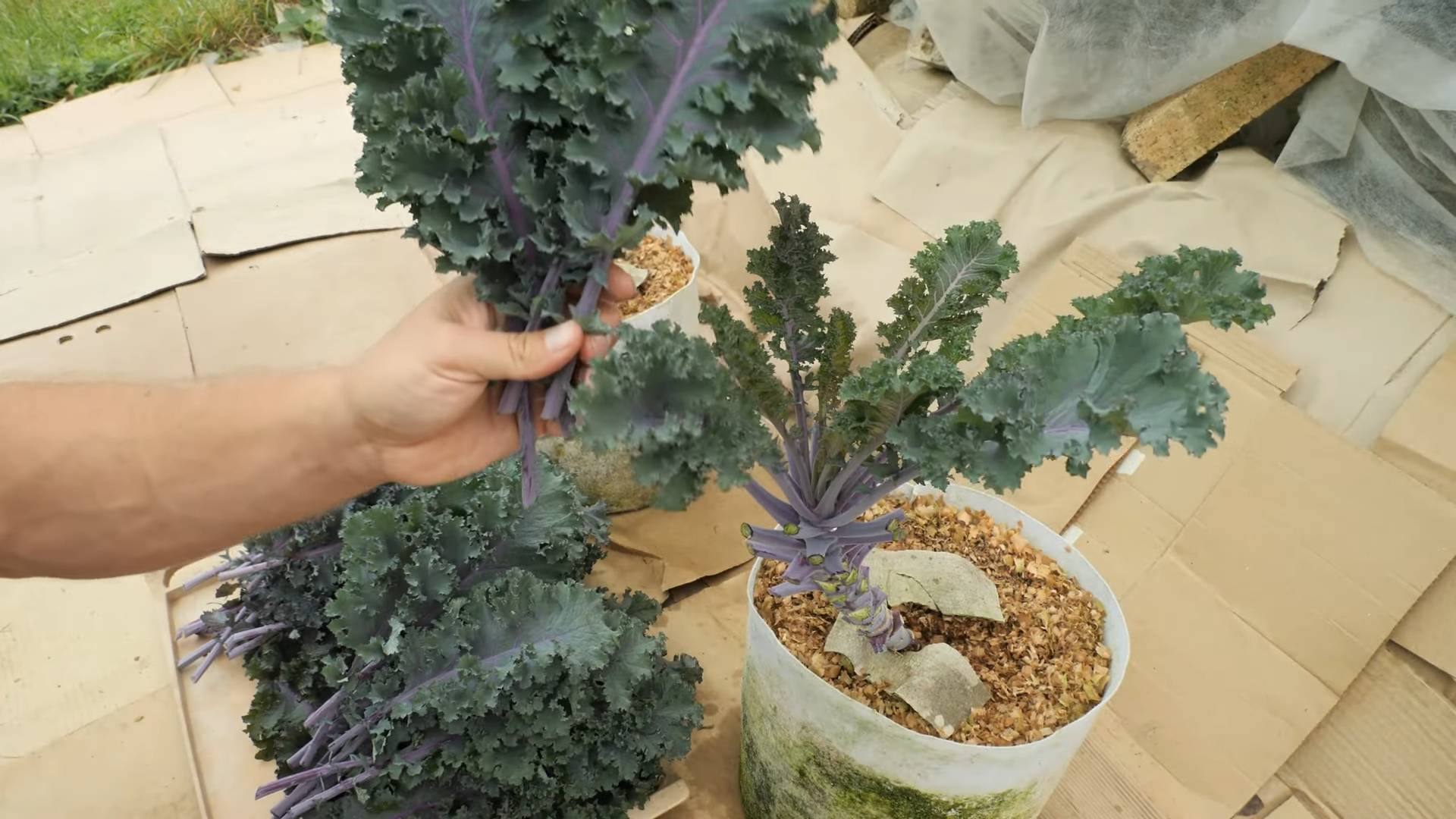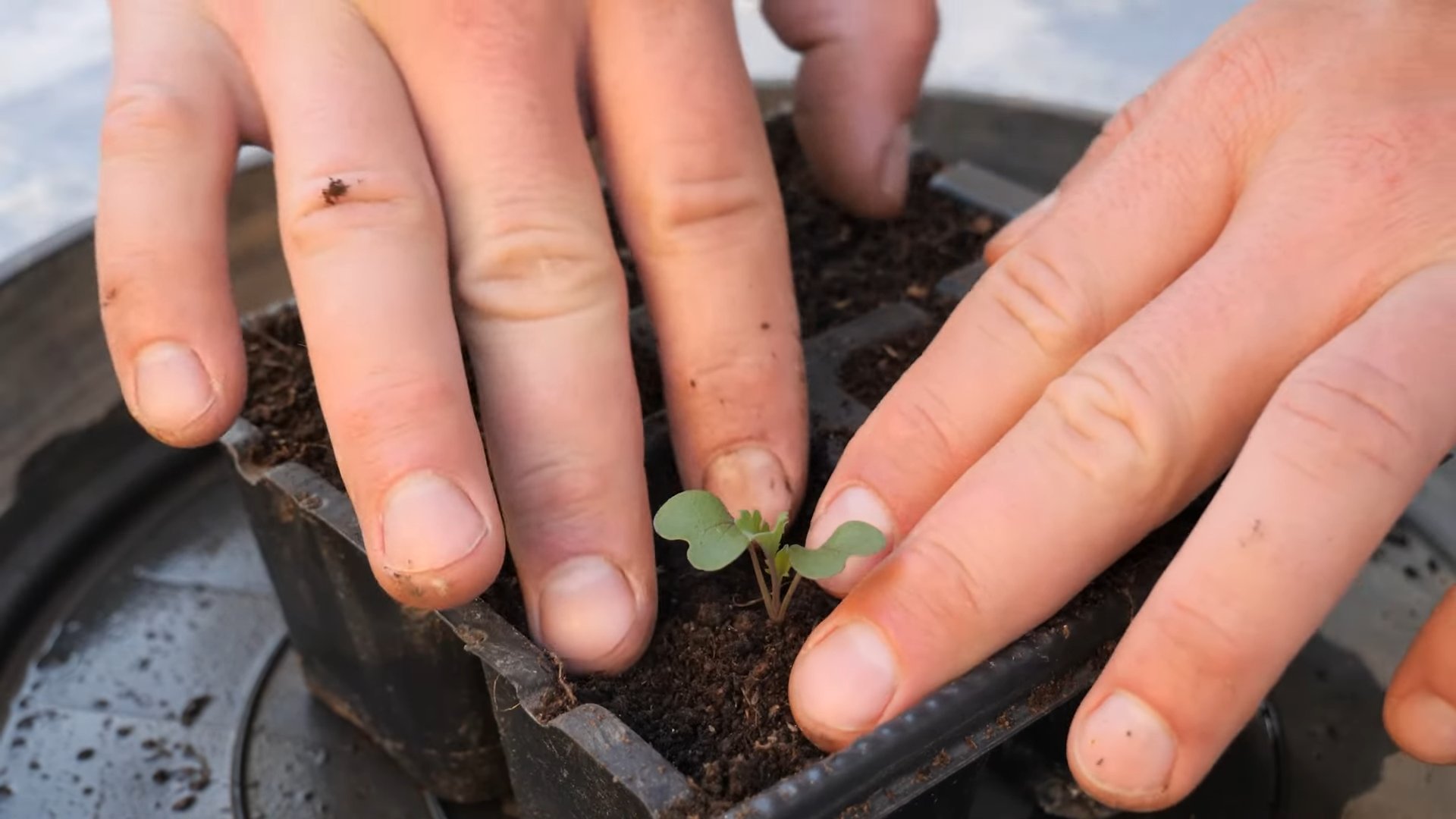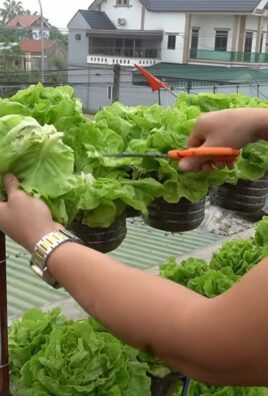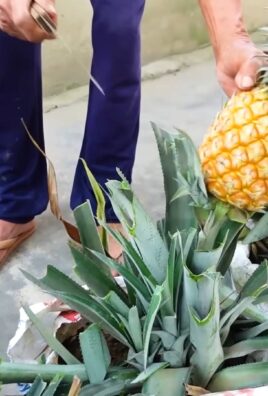Grow Kale at Home – sounds intimidating, right? Trust me, it’s not! I used to think I needed acres of land and a green thumb blessed by the gardening gods to even *think* about growing my own kale. But guess what? I was wrong! And I’m here to tell you that you can ditch the grocery store kale and start harvesting your own fresh, vibrant leaves, even if you’re a complete beginner like I was.
Kale, a nutritional powerhouse, has been cultivated for over 2,000 years, with roots tracing back to the eastern Mediterranean. It was a staple food in Roman times and throughout the Middle Ages. Now, it’s making a huge comeback as a superfood, and for good reason! But why spend a fortune on organic kale when you can easily grow kale at home, knowing exactly what’s gone into it?
In this article, I’m going to share my favorite DIY tricks and hacks that will transform your balcony, patio, or even a sunny windowsill into a thriving kale garden. We’ll cover everything from choosing the right variety to pest control, ensuring you have a bountiful harvest. Get ready to save money, eat healthier, and experience the joy of growing your own food. Let’s get our hands dirty!

Grow Your Own Delicious Kale: A Beginner’s Guide
Hey there, fellow garden enthusiasts! I’m so excited to share my experience with growing kale at home. It’s surprisingly easy, incredibly rewarding, and you’ll have a constant supply of this nutritional powerhouse right at your fingertips. Forget those wilted bunches at the grocery store – fresh, homegrown kale is a game-changer!
Choosing Your Kale Variety
Before we dive into the nitty-gritty, let’s talk kale varieties. There’s more to kale than meets the eye! Each type offers a slightly different flavor and texture, so picking the right one is key to your kale-growing success.
* Curly Kale (e.g., ‘Dwarf Blue Curled Vates’): This is probably what you picture when you think of kale. It has tightly curled leaves and a slightly bitter flavor that mellows when cooked. It’s super hardy and a great choice for beginners.
* Lacinato Kale (aka Dinosaur Kale or Tuscan Kale): My personal favorite! Lacinato kale has long, narrow, dark green leaves with a slightly bumpy texture. It’s sweeter and more tender than curly kale, making it fantastic for salads, soups, and even kale chips.
* Red Russian Kale: This variety boasts beautiful flat, fringed leaves with purple stems. It has a milder, slightly sweet flavor, especially when young. It’s also incredibly cold-hardy.
* Redbor Kale: If you’re looking for visual appeal, Redbor kale is your winner. Its deeply ruffled leaves are a vibrant purple-red color. It’s slightly more ornamental but still perfectly edible and delicious.
I recommend starting with either Curly Kale or Lacinato Kale – they’re both easy to grow and widely available.
Getting Started: Seeds vs. Seedlings
You have two main options for starting your kale journey: seeds or seedlings.
* Seeds: Starting from seed gives you more control over the entire process and is generally more economical. However, it requires a bit more patience and attention.
* Seedlings: Buying seedlings from a local nursery or garden center is a quicker and easier option, especially if you’re short on time or space. Just make sure the seedlings look healthy and vibrant.
I’ve done both, and honestly, I prefer starting from seed. There’s something so satisfying about watching those tiny sprouts emerge!
Step-by-Step Guide: Growing Kale from Seed
Here’s my tried-and-true method for growing kale from seed:
1. Timing is Key: Kale is a cool-season crop, meaning it thrives in cooler temperatures. For a spring harvest, start seeds indoors 6-8 weeks before the last expected frost. For a fall/winter harvest, start seeds outdoors in late summer (about 6-8 weeks before the first expected frost). I usually start my fall kale in late July or early August.
2. Prepare Your Seed Starting Mix: Use a well-draining seed starting mix. You can find this at most garden centers, or you can make your own by mixing equal parts peat moss, vermiculite, and perlite.
3. Sow the Seeds: Fill seed starting trays or small pots with the seed starting mix. Make a small indentation (about ¼ inch deep) in each cell or pot. Place 2-3 kale seeds in each indentation and gently cover with soil.
4. Water Gently: Water the seeds gently using a spray bottle or watering can with a fine rose. You want to moisten the soil without disturbing the seeds.
5. Provide Warmth and Light: Place the seed starting trays or pots in a warm location (around 70-75°F) and provide plenty of light. A sunny windowsill works well, but a grow light is even better. I use a simple fluorescent shop light hung a few inches above the seedlings.
6. Keep the Soil Moist: Keep the soil consistently moist, but not soggy. Check the soil daily and water as needed.
7. Thin the Seedlings: Once the seedlings have emerged and have a couple of true leaves (the second set of leaves), thin them to one seedling per cell or pot. Choose the strongest, healthiest-looking seedling and gently snip off the others at the soil line. Don’t pull them out, as this can disturb the roots of the remaining seedling.
8. Harden Off the Seedlings: Before transplanting the seedlings outdoors, you need to “harden them off.” This process gradually acclimates the seedlings to outdoor conditions. Start by placing the seedlings outdoors in a sheltered location for a few hours each day, gradually increasing the amount of time they spend outdoors over the course of a week. Protect them from direct sunlight and strong winds during this process.
Transplanting Your Kale Seedlings
Once your seedlings are hardened off and the weather is right (no danger of frost), it’s time to transplant them into your garden.
1. Choose a Sunny Location: Kale needs at least 6 hours of sunlight per day. Choose a location in your garden that receives plenty of sun.
2. Prepare the Soil: Kale prefers well-drained soil that is rich in organic matter. Amend your soil with compost or well-rotted manure before planting. I like to add a generous amount of compost to my kale beds.
3. Space the Seedlings: Space the seedlings about 12-18 inches apart. This will give them enough room to grow and mature.
4. Dig Holes: Dig holes that are slightly larger than the root balls of the seedlings.
5. Gently Remove the Seedlings: Gently remove the seedlings from their pots or trays. Be careful not to damage the roots.
6. Place the Seedlings in the Holes: Place the seedlings in the holes and gently backfill with soil. Make sure the top of the root ball is level with the surrounding soil.
7. Water Thoroughly: Water the seedlings thoroughly after planting.
Hey there, fellow garden enthusiasts! I’m so excited to share my experience with growing kale at home. It’s surprisingly easy, incredibly rewarding, and you’ll have a constant supply of this nutritional powerhouse right at your fingertips. Forget those wilted bunches at the grocery store – fresh, homegrown kale is a game-changer!
Choosing Your Kale Variety
Before we dive into the nitty-gritty, let’s talk kale varieties. There’s more to kale than meets the eye! Each type offers a slightly different flavor and texture, so picking the right one is key to your kale-growing success.
* Curly Kale (e.g., ‘Dwarf Blue Curled Vates’): This is probably what you picture when you think of kale. It has tightly curled leaves and a slightly bitter flavor that mellows when cooked. It’s super hardy and a great choice for beginners.
* Lacinato Kale (aka Dinosaur Kale or Tuscan Kale): My personal favorite! Lacinato kale has long, narrow, dark green leaves with a slightly bumpy texture. It’s sweeter and more tender than curly kale, making it fantastic for salads, soups, and even kale chips.
* Red Russian Kale: This variety boasts beautiful flat, fringed leaves with purple stems. It has a milder, slightly sweet flavor, especially when young. It’s also incredibly cold-hardy.
* Redbor Kale: If you’re looking for visual appeal, Redbor kale is your winner. Its deeply ruffled leaves are a vibrant purple-red color. It’s slightly more ornamental but still perfectly edible and delicious.
I recommend starting with either Curly Kale or Lacinato Kale – they’re both easy to grow and widely available.
Getting Started: Seeds vs. Seedlings
You have two main options for starting your kale journey: seeds or seedlings.
* Seeds: Starting from seed gives you more control over the entire process and is generally more economical. However, it requires a bit more patience and attention.
* Seedlings: Buying seedlings from a local nursery or garden center is a quicker and easier option, especially if you’re short on time or space. Just make sure the seedlings look healthy and vibrant.
I’ve done both, and honestly, I prefer starting from seed. There’s something so satisfying about watching those tiny sprouts emerge!
Step-by-Step Guide: Growing Kale from Seed
Here’s my tried-and-true method for growing kale from seed:
1. Timing is Key: Kale is a cool-season crop, meaning it thrives in cooler temperatures. For a spring harvest, start seeds indoors 6-8 weeks before the last expected frost. For a fall/winter harvest, start seeds outdoors in late summer (about 6-8 weeks before the first expected frost). I usually start my fall kale in late July or early August.
2. Prepare Your Seed Starting Mix: Use a well-draining seed starting mix. You can find this at most garden centers, or you can make your own by mixing equal parts peat moss, vermiculite, and perlite.
3. Sow the Seeds: Fill seed starting trays or small pots with the seed starting mix. Make a small indentation (about ¼ inch deep) in each cell or pot. Place 2-3 kale seeds in each indentation and gently cover with soil.
4. Water Gently: Water the seeds gently using a spray bottle or watering can with a fine rose. You want to moisten the soil without disturbing the seeds.
5. Provide Warmth and Light: Place the seed starting trays or pots in a warm location (around 70-75°F) and provide plenty of light. A sunny windowsill works well, but a grow light is even better. I use a simple fluorescent shop light hung a few inches above the seedlings.
6. Keep the Soil Moist: Keep the soil consistently moist, but not soggy. Check the soil daily and water as needed.
7. Thin the Seedlings: Once the seedlings have emerged and have a couple of true leaves (the second set of leaves), thin them to one seedling per cell or pot. Choose the strongest, healthiest-looking seedling and gently snip off the others at the soil line. Don’t pull them out, as this can disturb the roots of the remaining seedling.
8. Harden Off the Seedlings: Before transplanting the seedlings outdoors, you need to “harden them off.” This process gradually acclimates the seedlings to outdoor conditions. Start by placing the seedlings outdoors in a sheltered location for a few hours each day, gradually increasing the amount of time they spend outdoors over the course of a week. Protect them from direct sunlight and strong winds during this process.
Transplanting Your Kale Seedlings
Once your seedlings are hardened off and the weather is right (no danger of frost), it’s time to transplant them into your garden.
1. Choose a Sunny Location: Kale needs at least 6 hours of sunlight per day. Choose a location in your garden that receives plenty of sun.
2. Prepare the Soil: Kale prefers well-drained soil that is rich in organic matter. Amend your soil with compost or well-rotted manure before planting. I like to add a generous amount of compost to my kale beds.
3. Space the Seedlings: Space the seedlings about 12-18 inches apart. This will give them enough room to grow and mature.
4. Dig Holes: Dig holes that are slightly larger than the root balls of the seedlings.
5. Gently Remove the Seedlings: Gently remove the seedlings from their pots or trays. Be careful not to damage the roots.
6. Place the Seedlings in the Holes: Place the seedlings in the holes and gently backfill with soil. Make sure the top of the root ball is level with the surrounding soil.
7. Water Thoroughly: Water the seedlings thoroughly after planting.
Caring for Your Kale Plants
Now that your kale plants are in the ground, it’s time to give them the TLC they need to thrive.
* Watering: Kale needs consistent moisture, especially during hot, dry weather. Water deeply whenever the top inch of soil feels dry.
* Fertilizing: Kale is a heavy feeder, meaning it needs plenty of nutrients. Fertilize your kale plants every 2-3 weeks with a balanced organic fertilizer. I like to use fish emulsion or compost tea.
* Weeding: Keep the area around your kale plants free of weeds. Weeds compete with kale for water and nutrients.
* Mulching: Mulch around your kale plants with straw, wood chips, or shredded leaves. Mulch helps to retain moisture, suppress weeds, and regulate soil temperature.
* Pest Control: Kale can be susceptible to certain pests, such as aphids, cabbage worms, and flea beetles. Inspect your plants regularly for signs of pests and take action as needed. I prefer to use organic pest control methods, such as insecticidal soap or neem oil.
* Protecting from Cold: If you’re growing kale in a cold climate, you may need to protect it from frost and freezing temperatures. You can cover your plants with row covers or blankets when frost is predicted. Kale is surprisingly cold-hardy and can often survive temperatures down to the low 20s.
Harvesting Your Kale
The best part! You can start harvesting kale leaves as soon as they are large enough to eat, usually about 6-8 inches long.
* Harvesting Technique: Harvest the outer leaves first, leaving the inner leaves to continue growing. This will allow you to harvest kale from the same plant for several weeks or even months.
* How to Harvest: Simply snap or cut off the leaves at the base of the stem.
* When to Harvest: Harvest kale in the morning, after the dew has dried. This is when the leaves are at their freshest and most flavorful.
Troubleshooting Common Kale Problems
Even with the best care, you might encounter a few challenges along the way. Here are some common kale problems and how to address them:
* Aphids: These tiny pests can suck the sap from kale leaves, causing them to become yellow and distorted. Spray aphids with insecticidal soap or neem oil.
* Cabbage Worms: These green caterpillars can devour kale leaves in a matter of days. Handpick cabbage worms off your plants or use Bacillus thuringiensis (Bt), a natural bacteria that kills caterpillars.
* Flea Beetles: These tiny beetles can create small holes in kale leaves. Cover your plants with row covers to prevent flea beetles from reaching them.
* Yellowing Leaves: Yellowing leaves can be a sign of nutrient deficiency, overwatering, or underwatering. Check the soil moisture and fertilize your plants as needed.
* Bolting: Bolting is when kale plants prematurely flower and go to seed. This can happen when the weather gets too hot. To prevent bolting, plant kale in a location that receives some

Conclusion
So, there you have it! Growing kale at home is not only achievable, but it’s a rewarding experience that puts fresh, nutritious greens right at your fingertips. Forget those wilted, overpriced bunches at the grocery store. With a little effort and the right approach, you can cultivate a thriving kale patch that provides you with a constant supply of this superfood.
Why is this DIY trick a must-try? Because it empowers you to take control of your food source, ensuring you’re consuming kale that’s free from harmful pesticides and packed with flavor. Plus, it’s incredibly satisfying to harvest something you’ve nurtured from seed to leafy green. Imagine the pride you’ll feel serving a salad made entirely from your own homegrown kale!
But the benefits don’t stop there. Growing your own kale is also a fantastic way to reduce your carbon footprint. By eliminating the transportation and packaging associated with store-bought produce, you’re making a conscious choice to live more sustainably. And let’s not forget the cost savings! Over time, the money you save on groceries will more than offset the initial investment in seeds, soil, and containers.
Looking for suggestions or variations to spice things up? Absolutely! Consider experimenting with different varieties of kale. Curly kale is a classic choice, but you might also enjoy the milder flavor of Tuscan kale (also known as Lacinato or dinosaur kale) or the vibrant colors of Red Russian kale. You can also try growing kale in different locations, such as raised beds, containers on your patio, or even indoors under grow lights.
For those with limited space, container gardening is an excellent option. Choose a pot that’s at least 12 inches deep and wide to give your kale plants plenty of room to grow. Be sure to use a well-draining potting mix and water regularly, especially during hot weather. You can even succession plant your kale, sowing new seeds every few weeks to ensure a continuous harvest throughout the growing season.
Another variation is to incorporate companion planting into your kale garden. Planting beneficial herbs and flowers alongside your kale can help deter pests and attract pollinators. For example, marigolds are known to repel aphids, while dill attracts beneficial insects that prey on cabbage worms.
Ready to embark on your kale-growing adventure? We encourage you to give this DIY trick a try. Start small, be patient, and don’t be afraid to experiment. With a little practice, you’ll be amazed at how easy it is to grow your own delicious and nutritious kale.
And most importantly, we want to hear about your experience! Share your tips, tricks, and photos with us in the comments below. Let’s create a community of kale enthusiasts who are passionate about growing their own food. Together, we can inspire others to embrace the joys of gardening and the benefits of fresh, homegrown produce. So, grab your seeds, get your hands dirty, and start growing kale at home today! You won’t regret it.
Frequently Asked Questions (FAQs)
What is the best time of year to plant kale?
Kale is a cool-season crop, which means it thrives in cooler temperatures. The best time to plant kale depends on your climate. In areas with mild winters, you can plant kale in the fall for a winter or early spring harvest. In colder climates, plant kale in the early spring, a few weeks before the last expected frost. You can also start kale seeds indoors 6-8 weeks before the last frost and transplant them outdoors once the weather warms up. For a fall harvest in colder climates, start seeds indoors in mid-summer and transplant them outdoors in late summer or early fall.
How much sunlight does kale need?
Kale needs at least 6 hours of sunlight per day to grow well. If you’re growing kale indoors, you’ll need to supplement with grow lights to provide adequate light. Choose a sunny spot in your garden or on your patio for your kale plants. If you live in a hot climate, some afternoon shade can help prevent the leaves from scorching.
What kind of soil does kale need?
Kale prefers well-draining soil that is rich in organic matter. Amend your soil with compost or other organic matter before planting to improve drainage and fertility. Kale also prefers a slightly acidic to neutral soil pH, between 6.0 and 7.0. You can test your soil pH with a soil testing kit and amend it accordingly.
How often should I water kale?
Water kale regularly, especially during hot weather. Keep the soil consistently moist, but not waterlogged. Water deeply at the base of the plants, avoiding wetting the leaves, which can promote fungal diseases. Mulching around the plants can help retain moisture in the soil and suppress weeds.
What are some common pests and diseases that affect kale?
Kale can be susceptible to a variety of pests and diseases, including aphids, cabbage worms, flea beetles, and fungal diseases like powdery mildew. Inspect your plants regularly for signs of pests or diseases and take action promptly. You can control aphids with insecticidal soap or neem oil. Cabbage worms can be handpicked or controlled with Bacillus thuringiensis (Bt). Flea beetles can be deterred with row covers. Prevent fungal diseases by providing good air circulation, avoiding overhead watering, and removing any infected leaves.
How do I harvest kale?
You can start harvesting kale leaves once they are about 4-6 inches long. Harvest the outer leaves first, leaving the inner leaves to continue growing. You can harvest kale leaves continuously throughout the growing season. Simply snap or cut the leaves off at the base of the stem.
Can I eat the kale stems?
Yes, you can eat the kale stems, but they can be tough and fibrous. To make them more palatable, remove the tough outer layer with a vegetable peeler and chop the stems into small pieces. You can then sauté, steam, or roast the stems along with the leaves.
How do I store kale?
Store kale in the refrigerator in a plastic bag or container. It will keep for about a week. To keep kale fresh for longer, wash it thoroughly, dry it completely, and wrap it in paper towels before storing it in a plastic bag.
Can I freeze kale?
Yes, you can freeze kale. To freeze kale, wash it thoroughly, remove the tough stems, and blanch it in boiling water for 2-3 minutes. Then, plunge it into ice water to stop the cooking process. Drain the kale well and squeeze out any excess water. Pack it into freezer bags or containers and freeze for up to 12 months.
Is kale a good source of nutrients?
Yes, kale is an excellent source of nutrients. It is packed with vitamins A, C, and K, as well as calcium, iron, and antioxidants. Kale is also a good source of fiber and protein. Adding kale to your diet can help improve your overall health and well-being.




Leave a Comment